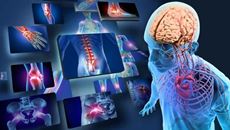- Delivery Method Online
- Professional Certificate
- 24hrs Suggested Study Time
- 3 Months Access
- Tutor Support
- Study On Any Device
- 5295 Students
Medical Transcription

Learn how to transcribe the medical reports most often used in healthcare today, and discover how to get started and advance as a medical transcriptionist.
Take your first step toward a lucrative career as a medical transcriptionist! In this course, you'll learn how to transcribe the most common medical reports used in both inpatient and outpatient settings. We'll review a lot of the grammar you might have forgotten since high school and apply it to the reports. This knowledge will help prepare you to work almost anywhere in the medical field—doctors' offices, clinics, public health facilities, and hospitals. With this foundation, you'll be set to advance your education so you can work as a subcontractor for a company that outsources transcription, or you can eventually even take on your own clients—all from the comfort of your own home.
We'll go through each of the nine main report types—their formatting requirements, the components of each one, and how they are used in the clinical setting. We'll review grammar points in every lesson, pointing out important elements that will make your reports perfect. You'll also gain important clinical knowledge of major disease processes that are essential to enhance your skill as a medical documentation specialist.
Along the way, we'll download a free transcriber that you'll use to listen to dictation, and we'll cover how to use it to produce the reports in your word processor. These hands-on exercises will give you the practice you'll need to determine if this field is for you. We'll also go through the options you'll have now and in the future by developing the skills of a medical transcriptionist. By the end of this course, you'll know the basic report types, have clinical knowledge of major diseases, be able to correct grammar from dictated reports on the fly, and know the next steps you'll need to take!
Courses are delivered to you through expertly executed lessons, online instruction and interaction with like-minded students. Our courses are designed to deliver all of the benefits of studying in a classroom whilst giving you the flexibility to study at a time and place to suit your needs. You can access your classroom 24/7 from any device with an internet connection.
This course has a 3 month duration. You'll complete comprehensive lessons, quizzes and assignments before submitting your final exam at the end of the course to achieve your certificate. Courses must be completed within the 3 month access period.

Jennifer Della'Zanna
Jennifer Della'Zanna graduated from Albright College in Reading, PA with a Bachelor of Arts degree. With 15 years' experience in the health care industry, she has worked as a medical transcriptionist, receptionist, medical assistant, practice admi... Read more
Read Jennifer Della'Zanna's ProfileFrequently Asked Questions
What people are saying about our courses
The Learning Environment
From the moment that you enrol in the Medical Transcription you will become an integral part of our learning community. You'll find yourself with the freedom to learn at a speed that suits you, on any device, from anywhere in the world. Achieving your career goals no longer has to mean compromising family and work commitments.
Ready to get started?
Enrol NowOur Values
Learn At Your Own Pace
We believe in personalised learning. That's why we provide all the tools and support you need to succeed at your own pace. With flexible learning, you'll stay motivated and retain more information. Plus, you can balance your studies with work and family commitments to make your dreams a reality.
We Won't Break The Bank
Education should be accessible to anyone who wants to learn. That's why we offer some of the most competitive prices in the industry with payments plans for just $25 per week. Investing in your future is a smart choice and doesn’t have to break the bank.
Industry-Led Courses
There's no better way to learn than from experts with years of experience in your field. That's why each of our 200+ industry-led courses are designed to give you a real-life perspective on your industry. With our expert mentors, you'll learn from people who have a wealth of knowledge and experience, and who are passionate about sharing it with you.
Get The Personal Support You Deserve
At Vibe Learning, we're real people who are dedicated to providing you with personal support every step of the way. Our industry experts are not only professional and knowledgeable but also incredibly passionate about sharing their expertise with you. With their guidance, you'll gain invaluable insights and practical knowledge to help you succeed.
Still looking?
Check out the following courses related to Medical Transcription:



